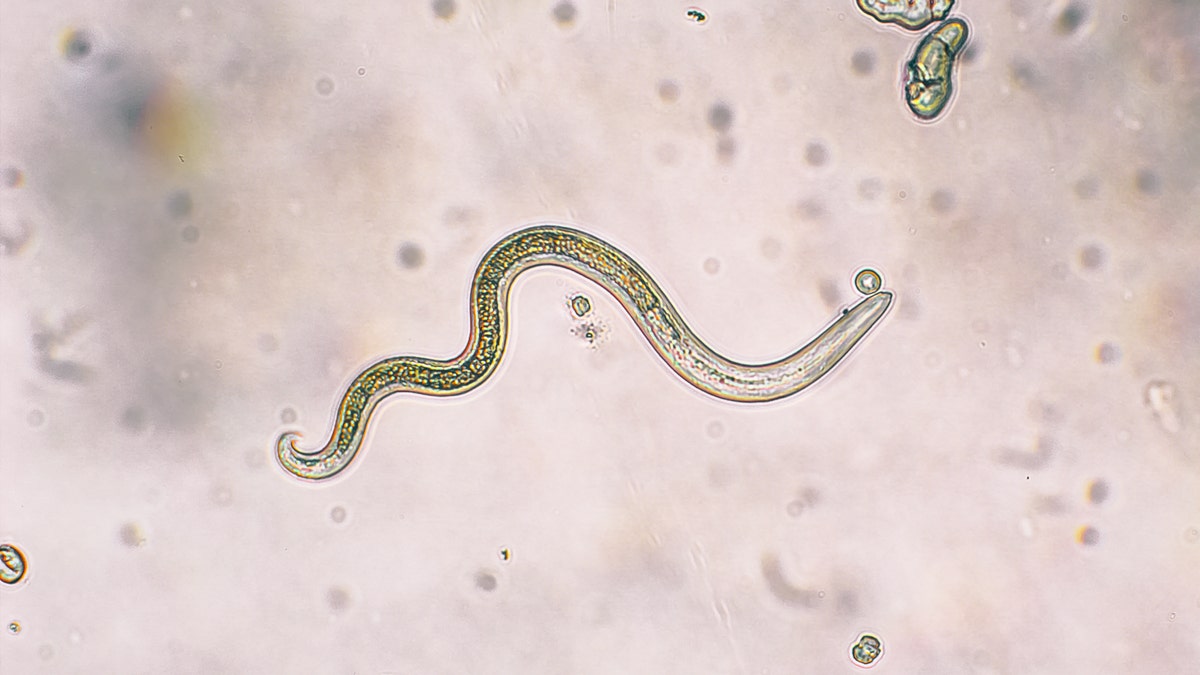Fox News Flash top headlines for Nov. 5
Fox News Flash top headlines for Nov. 5 are here. Check out what's clicking on Foxnews.com
A parasitic eye worm that typically affects cows infected a woman’s eye after she darted through a swarm of flies while on a trail run in California, according to a recently published case report on the horror movie-like occurrence.
The case report, which was published late last month in the journal Clinical Infectious Disease, involves a 68-year-old woman from Nebraska who spends the winter months in Carmel Valley.
MAN HAS 12-CENTIMETER PARASITIC WORM REMOVED FROM BRAIN AFTER YEARS OF NUMBNESS, BLACKOUTS
In March 2018, the woman’s right eye was irritated, prompting her to flush it out with tap water. Moments later, a roughly half-inch long “wriggly roundworm” emerged from her eye. She then noticed a second one and removed it, the report says, according to Live Science.

The woman's eye was likely infected by the parasitic worm (not pictured) following a trail run in California. (iStock)
The terrifying experience led the woman to quickly seek help from an eye doctor in Monterey. There, the doctor removed a third roundworm from her eye. It was preserved in formaldehyde and sent to the Centers for Disease Control and Prevention (CDC) for testing. In the meantime, the woman was told to flush her eye with distilled water and was also prescribed a topical medication to prevent bacterial infections, per Live Science.
CDC researchers, after testing the specimen, determined the worm was the species Thelazia gulosa — a parasitic eye worm that typically infects cows. The worm is carried by flies that consume the animal’s tears and other eye secretions, according to the federal health agency.
The woman was likely infected when she went for a trail run in Carmel Valley in February 2018, the month before she noticed the worms in her eye. At one point during her outing, the woman accidentally ran into a swarm of flies — so many that she reportedly swatted them from her face “and [was] spitting them out of her mouth,” the report reads.

This is the second human case of Thelazia gulosa, according to researchers. (iStock)
The case marks only the second human one ever reported. The first, in 2016, involved a 26-year-old woman who contracted Thelazia gulosa after horseback riding and fishing in a cattle-farming area near the Oregon coast.
MANN PACKING RECALLS VEGETABLE PRODUCTS OVER LISTERIA CONCERNS
The Nebraska woman’s case “may represent an emerging zoonotic disease in the United States,” or a disease that can spread from animals to humans, the report reads, according to Live Science. Humans may also be “suitable hosts” for Thelazia gulosa eggs, the authors wrote.
When the woman returned to Nebraska, she pulled a fourth worm from her eye, according to the report. She continued to irrigate her eyes for the next two weeks. After that, the irritation in her eye went away and no more worms were discovered.

